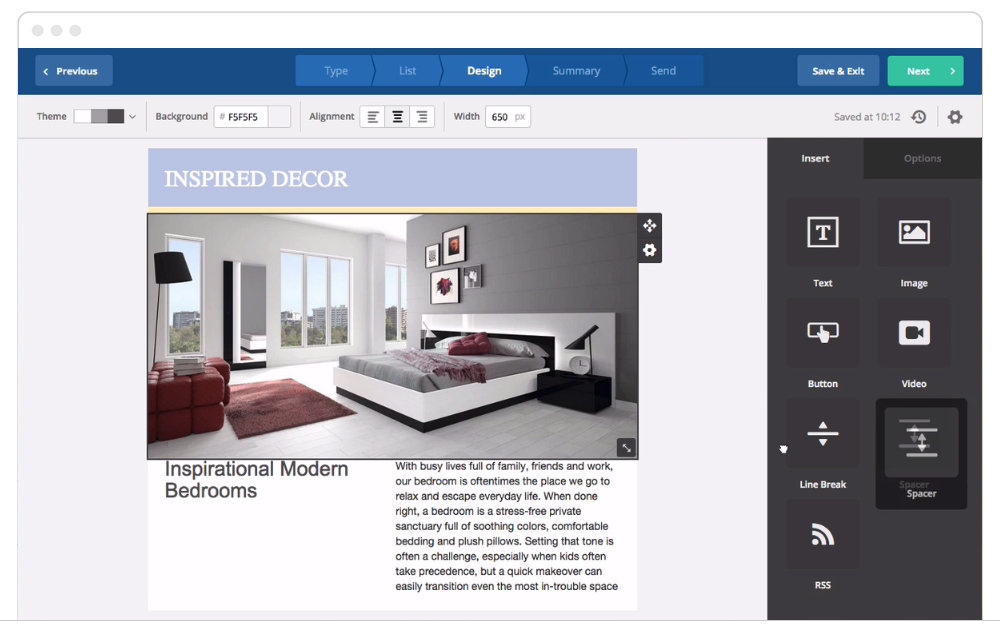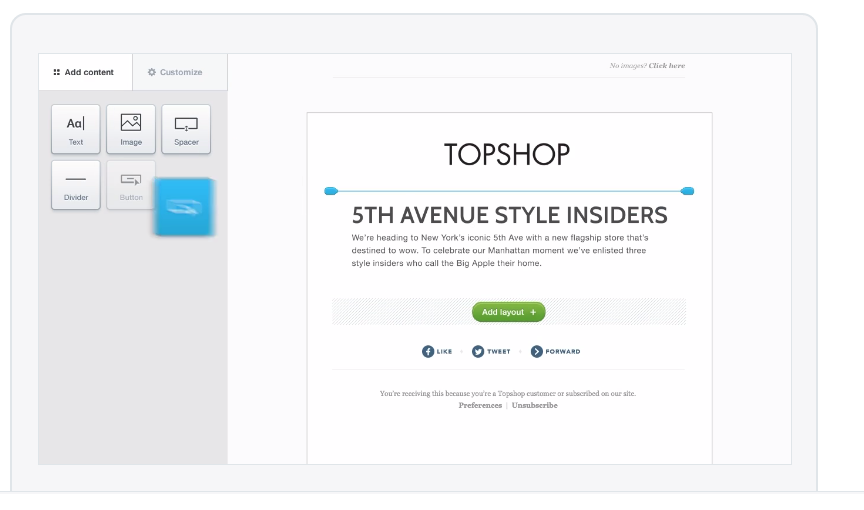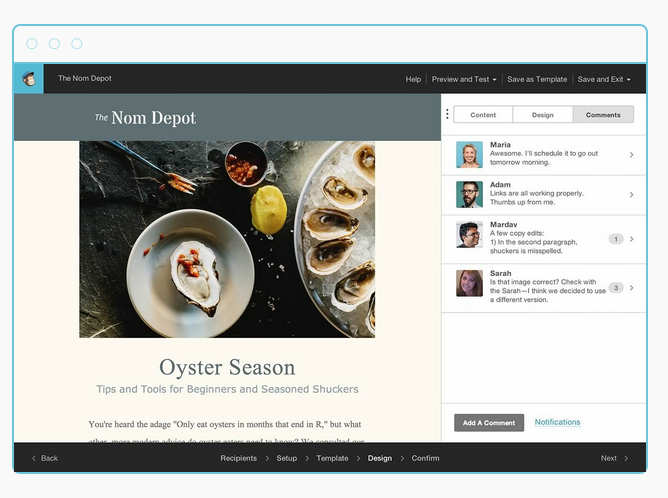4 Email Marketing Platforms Most Appealing to Online Retailers

Fact:
Very few ecommerce marketing channels are as effective as email.
For instance:
The Conversion Academy discovered in 2011 that conversions from email accounted for 67.37% of all checkout transactions.
According to Experian, the average return on investment from email campaigns is $44.25 for one dollar spent.
ConvinceandConvert on the other hand claims that last year 44% of email recipients made at least one purchase based on a promotional email they received (source).
And so, the online retailers’ interest in email marketing comes as no surprise.
But that’s where problems start.
Because, you see…
Email marketing is difficult.
On one end there are headlines that must make the email worth opening, call to action to entice users to click and all the other nitty gritty things that make an email campaign successful.
And then, there’s the technology.
For one, there’s an abundance of email platforms on the market. Some offer similar functionality, others target only specific uses of email.
But one thing’s for sure:
It’s really hard to establish which solution you should use.
Luckily that’s exactly what I’m going to be talking about in this post:
The 4 email-marketing platforms I found most appealing to ecommerce owners.
Before we begin though:
This is not a comparison post.
My goal is merely to introduce platforms I believe you, as an online retailer would benefit the most from. But as to which one is better than the others, I’ll leave this up to you to decide.
With that out of the way…
Platform 1: Active Campaign
Active Campaign is an all-in-one email-marketing platform that encompasses 3 key areas:
Email Marketing
At its core, Active Campaign, just like most of the other email marketing platform allows you to send email blasts that you can create with a simple drag and drop interface.
The app features a number of templates you can start with; all mobile friendly and you can further customize them, add or remove elements etc.

On top of that Active Campaign features real-time insights into your campaign’s performance.
Marketing Automation
I won’t deny it:
Today’s platforms’ ability to send emails based on customer behavior or other triggers is amazing.

(An example of marketing automation flow from Active Campaign’s website)
And Active Campaign offers a whole suite of tools to help you automate your email marketing, from sending emails based on website visits to creating workflows based on advanced user characteristics and behaviors.
CRM (Customer Relations Management)
It’s true:
Sending once off and automated emails are pretty standard features among email platforms.
But providing a full-blown CRM functionality isn’t.
And that’s where Active Campaign stands out.
The tool allows integrating your emails with the sales process to automatically nurture your leads.
Sure, this option is more enticing for B2B companies. Nonetheless, if you sell products to other businesses, you may find the CRM functionality useful.
Pricing
Plans start at $9 a month for 500 contacts and grow with the size of your list (i.e. 50,000 contacts would cost $225/mo).
Platform 2. Campaign Monitor
Campaign Monitor was the very first email platform I used.
But back then they were targeting primarily designers who would offer email services to their clients. Since then however the platform evolved to offer email marketing to businesses in general. Campaign Monitor offers standard functionality you would expect from an email platform:
The ability to design and send once off email campaigns.
Campaign Monitor features a simple to use, drag-and-drop interface helping you build stunning emails in minutes.

It also features advanced reporting features to help you keep track of your campaigns’ performance.
Email automation.
Campaign Monitor also allows you to create workflows to automate sending emails, a crucial functionality for every ecommerce owner.
But…
The platform also allows for integration with many sales and CRM systems (here’s a list of all integrations), enabling you to make it part of your entire workflow.
Pricing
Campaign Monitor offers two pricing options:
Monthly plan, starting at $9/mo.
This plan is ideal if you send emails regularly.
Once off pricing.
However if you’re only sending emails occasionally, Campaign Monitor has an option to save you money.
Instead of signing up for a monthly plan, you can pay only if you send an email. The cost is $5 per campaign plus 1cent per each recipient.
With that, sending an email to 500 recipients will cost you $10 ($5 flat fee for a campaign + $5 for 500 recipients).
Platform 3. Mailchimp
This is another all-in-one marketing platform, quite popular among online retailers. Mailchimp offers all functionality you would expect from such platform:
Designing and sending emails
With Mailchimp you can use one of the many templates (the platform even features a section dedicated to ecommerce newsletters) or create your own email from scratch.

Automation and Autoresponders.
Mailchimp allows you to set up auto-responders series sent based on customer behavior and preferences.
The platform features pre-built workflows that you can edit to your own needs. Or build custom rules based on various segmentation and targeting options.

Powerful Analytics.
It’s a fact, you can’t run successful email marketing campaigns unless you can keep track of your emails’ performance.
And Mailchimp has you covered.
With its advanced reporting options you can track your campaigns’ performance, monitor trends, see subscriber’s activity and even track sales from each campaign.
What’s more, the analytics module let’s you import your website analytics directly into Mailchimp to help analyze ROI, revenue and other campaign KPIs.
Pricing
You can use Mailchimp for free if your list doesn’t exceed 2000 contacts. Unfortunately the free version does not include marketing automation tools.
To avail of this and other options restricted for paid accounts only, you have to upgrade to a paid plan with prices starting at $10/mo for up to 1000 subscribers.
Platform 4. Drip
Drip doesn’t work like a typical email-marketing platform.
Although it offers this functionality for it, it’s not great for sending once off campaigns.
That’s because Drip focuses entirely on email automation and handling every phase of your customer life cycle – nurturing a person from someone who’s just interested in your products to becoming a lead, then customers and finally a repeat customer.

If you get a lot of visitors who just browse around, unsure whether to buy, then Drip is for you.
With Drip you can:
Place a simple widget on your site enticing visitors to buy.
Send them autoresponder series to convert them into customers.
Once they buy, you can mark them as clients moving them to another email list sending offers or updates, for instance to increase the chances of a customer buying again.
In other words, Drip allows you to build an automated system to convert visitors into repeat purchasers.
But with that, Drip is not ideal for every online retailer.
If you sell expensive items however, or have a lot of audience coming to your site from content marketing efforts that you need to convert, Drip is a tool that could help .
Pricing
Monthly plans start at $49/mo.
What about you?
I admit: the above are my subjective choice of email platforms most appealing to online retailers.
But what about you?
Have you tried other solutions to promote your products? Share your experiences with us in the comments.






